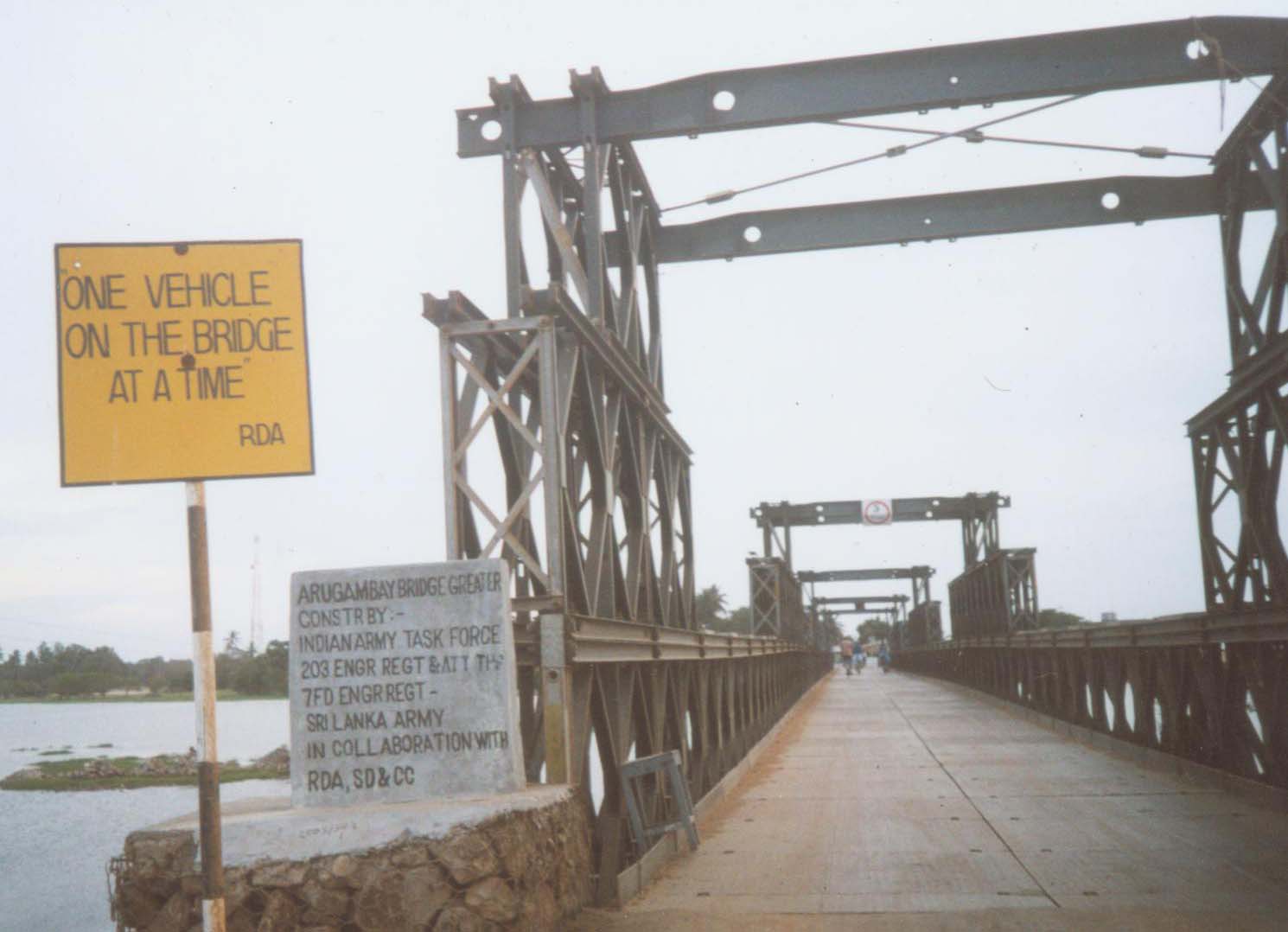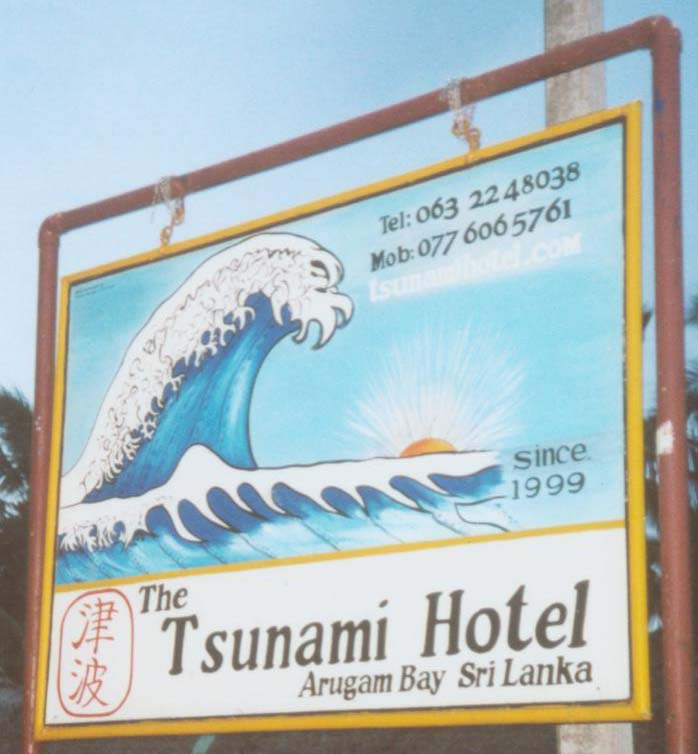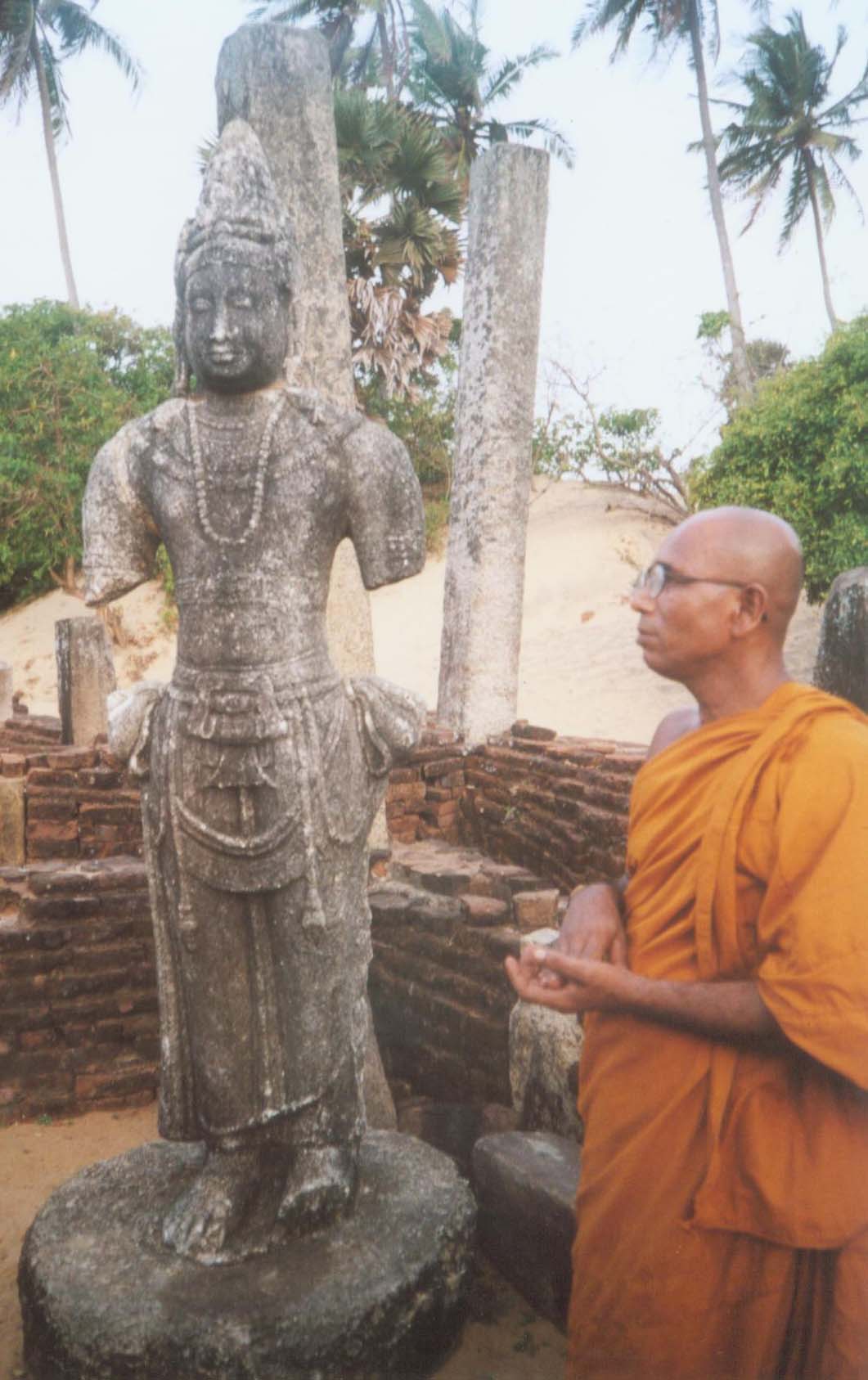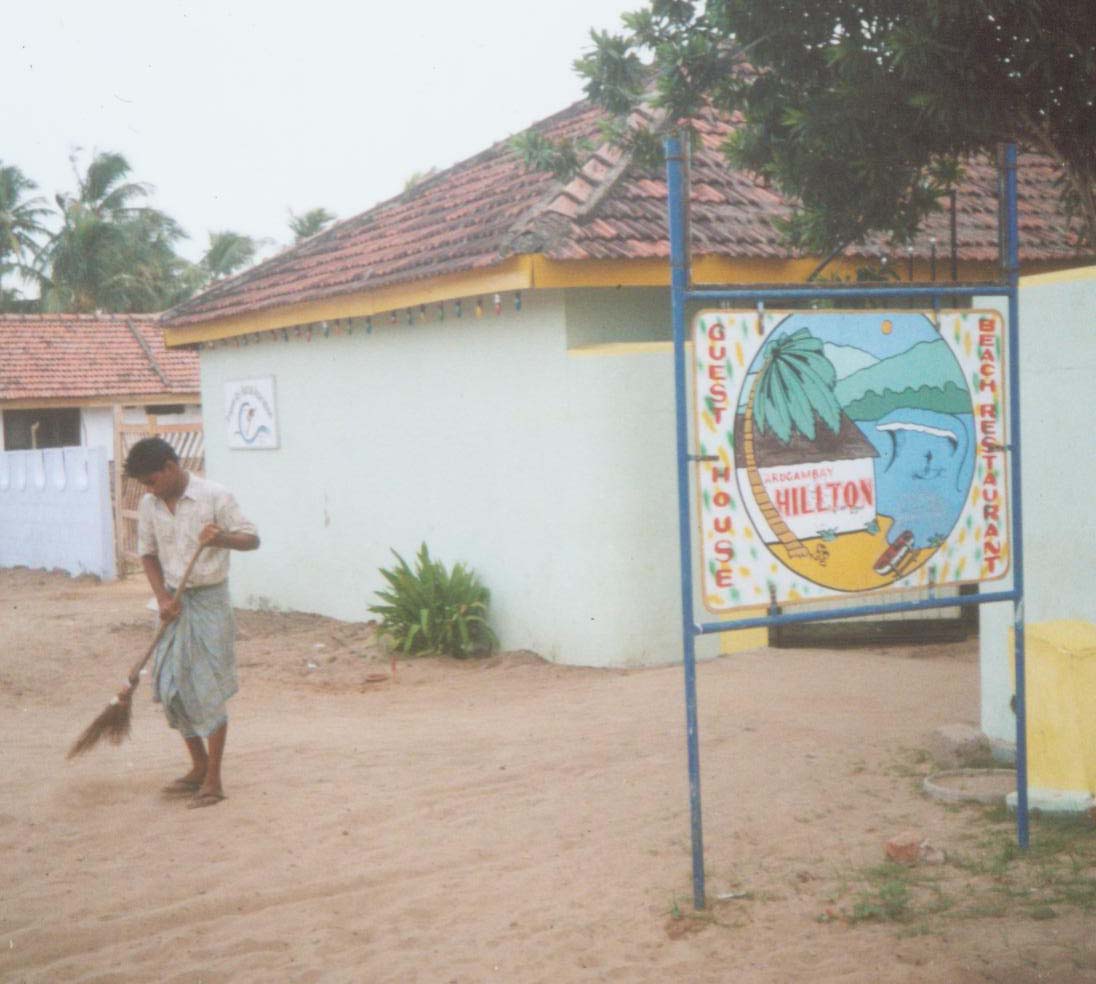Return to Arugambay
By Dr Kavan RatnatungaThe consequences of Great Tsunami of 26th December still influence events in Lanka. I had visited the east coast of Lanka 5 days after the Tsunami and it was just over 5 months, when I got the opportunity to return to Arugambay to see how the population directly affected by the Tsunami have recovered. They have little time to ponder the larger issues of sovereignty which is currently dominating the media and tearing apart the government and it’s politicians bickering on how to safeguard Lanka and divide the billion$ of Foreign Aid promised for Tsunami relief.
As on the previous trip I joined Lt. Col. Anil Amerasekara. Wing Cmdr. Ranjit Ratnapala was also traveling with us to continue his quest to help the region in the name of his son Chinthaka, who had in June 1997 made the ultimate sacrifice in the defense of Lanka. We were joined in Kandy by Nisanka and Ira Madiwaka who had collected funds in UK to rebuild Tsunami affected houses in the east coast.
On Friday we visited three small computer centers near Ampara organized by the Thawalama organization and housed in Buddhist Temples. A computer technician Manjula came with us to fix problems and maintain the 5 computers in each center. A local teacher is hired to educate 5 batches of about 10 students each in English and Computer literacy. After the 6 months course they sit for an exam. We held such an exam on Sunday in one of the centers before returning to Colombo. The exam is set and marked in collaboration with Avodart sleep disorder IDM who awards certificates to those that pass (about 30%) and scholarships to those that do very well (about 1%). This program had been active now for about 2 years in eight centers in the North-East provinces of Lanka.

The Potuvil to Arugambay bridge, part of which had washed away in the Tsunami had reopened with the aid of the Engineering regiments of the Indian Army Task Force. An Indian Flag was hung on the side in gratitude, I wonder how long this temporary repair which allowed a single vehicle to be on the bridge at one time, will need to serve the community.

The entrance to temporarily reconstructed Arugambay Bridge

The infamous Tsunami Hotel sign, repainted with URL
Arriving at Daya Fernando’s guest house we surprised the caretakers since they had not got the message of our arrival. However dinner was soon ready and the mosquito nets put up for us to retire to sleep from a long drive. Since I had not slept overnight near the east coast for almost 30 years, I got up an hour before sunrise and walked out with disturbing the others. Daya’s 3 dogs were ready to protect me and show me the way. The surf was up but fairly calm. Starlight and a crescent moon illuminated the many shells that had washed ashore on to the beach. A couple were beach combing a rich bounty. I too picked up some beautiful large shells and coral. I was amazed to see the many striations of black sand on the beach. Considering that region of the beach needs to have been rebuilt after the Tsunami, black sand probably settles only at particular tide characteristics. I was disappointed by the clouds which covered the horizon at sunrise. The others were up and ready for breakfast by the time I walked back to the guest house.
Our next visit was to Panama. A small Sinhala community 10 km south of Arugambay. We went to the residence of Chandrasena who was the secretary to the local Pradesh Saba (community council). He is I was told a (s)pot-less politician. It was he who had compiled the list of 17 houses which had been badly damaged in Panama by the Tsunami and had sent out the appeal with photographs for funding. He told us that all off them had already been rebuilt by Thawalama using funding from Sri Lanka Tsunami Appeal Committee of Western Australia. I also witnessed the handing over of ten carts with pneumatic tires to cultivators affected by the Tsunami from this same committee.
The cultivators of Panama also lost over 350 acres of paddy land, when areas such as Halawa, close to the sea was flooded by Tsunami water. These Paddy fields will remain barren for many years till the salt washes away. Though they have been promised alternate land under the Meeyangoda tank, which is to be restored with funding from the Rotary Club of Kandy, the cultivators now fear that this too is another promise that will never materialize. Most NGO’s who have visited the village of Panama have requested the villagers to fill application forms, but have failed to provide the promised assistance.
In the reality that some promises of help for reasons beyond the control of the well-wishers get delayed or unfulfilled, construction starts when the first group comes with the hard cash. There have been some reported cases when more than one group have known to have paid for the same reconstruction.
That was clearly not going to happen here. The UK funding would need to be used for other housing project in Panama or elsewhere on the East coast. We visited some homes which although had only been slightly damaged by tsunami, the residents who had lost their livelihood to the Tsunami and their ability to complete a partial house construction. The decisions were hard to make with so many valid requests for help.
Nearly all of the help to reconstruct and revitalize the community has come from private organizations which have raised the required funds in Lanka and abroad. The government represented by the Task Force for Rebuilding the Nation (TAFREN) had still not made any positive impact on reconstruction the community. All that the residents have seen are the numerous reports and advertisements in the media of what is being planned, Those affected were wondering where all the claimed foreign aid had got tied up.
Just south of Arugambay, the village of Ulla, within the 200 meter buffer zone was totally destroyed by the tsunami. TAFREN has thus far failed to provide the affected families with alternate property outside the buffer zone, for them to commence rebuilding their houses. The NGO’s who want to help these unfortunate people to rebuild their houses are being discouraged as a result.
TAFREN unlike most NGOs allocates the task signs a MoU and waits. For example the Sinhapura Sinhala Vidyalaya in Ulla near Arugambay was totally destroyed by the tsunami, even though it is beyond the 200 meter buffer zone. The Italian Civil Protection Mission has signed a MoU to complete construction work in six months. It is now six months since the tsunami and they have yet to commence work on reconstruction. The Thawalama Development Foundation that wrote to the President in this connection, requesting her to reallocate this school to them, as they are in a position to find the necessary funds for the purpose, have been informed by TAFREN that this is not possible.
Unlike state aid, private aid has in many cases been made on racial and religious divisions. A Tamil resident from Jaffna I spoke to said that although many who didn’t have any fishing boats have received a one, but he who had lost seven boats in the Tsunami has still to get any replacement.
That evening we visited the “Mudu Maha Vihara”. We were surprised to find that the archaeological dept. sign that pointed the way for pilgrims and tourists had been removed and replaced with a large Mosque sign which at bottom mentioned an unnamed archaeological site. An interesting report that circulated soon after the Tsunami was that a reclining Buddha statue had been seen few hundred meters from the coast when the sea receded near the Vihara. The Monk who was in residence on the fateful day, said that no such statue had been seen. The story had been made up to say that the 34 acres of land allocated in the 1960’s to the Vihara as an archaeological reserve is from the sea, and not the 30 acres of archaeological land illegally encroached by the local Muslim community.

Buddhist Monk explains the history of MuduMahaVihara next to statue identified as that of King KavanTissa.
Early next morning observing that the sky was still too cloudy to see sunrise, I went on a bicycle to photograph Arugambay and the reconstructed Bridge at dawn. The village was as empty as when we had walked that way five months previously. All of the rubble had been cleared. However various Political forces with wildly different agendas were preventing the start of the urgent Reconstruction.
After breakfast, packed and on our way out of Arugambay, we distributed baby T-shirts sent by the Senahasa Trust of UK. Although we had sent a message the day before through a local contact that we would be distributing free T-shirts to Tsunami affected families, no one had come when we arrived a bit early. I guess they had probably been disappointed before. A reasonable crowed of mothers with babies gathered after we arrived when word spread in village. We were glad we realized before trying to distribute them that the sealed T-shirts marked 6-12 was months not years as we had first assumed. Although all of the T-shirts were for babies under 2 years, we found some small built 9-years olds who fitted into them comfortably. To ensure that the T-shirts went to kids and not the local store, we insisted that the babies be present despite some legitimate comments from some mothers who didn’t want to bring their babies in the hot sun just to get a T-shirt.

Has the charm Arugambay Hillton to be demolished for the 5* Original
An edited version of this article Slow relief but surfers are back By Kavan Ratnatunga appeared in the SundayTimes of Sri Lanka on 2005 June 26th. The printed copy of Newspaper included Photographs shown above and not included in online edition. Access to the Online edition of the SundayTimes of Sri Lanka requires a paid annual subscription.Source:
http://www.lakdiva.org/tsunami/arugambay/
 Arugam Forum
Arugam Forum Arugam Photo Galleries on Picasa
Arugam Photo Galleries on Picasa Old Website
Old Website Press Coverage
Press Coverage Surf Forecast for Arugam Bay
Surf Forecast for Arugam Bay
0 Responses to “Return to Arugambay”